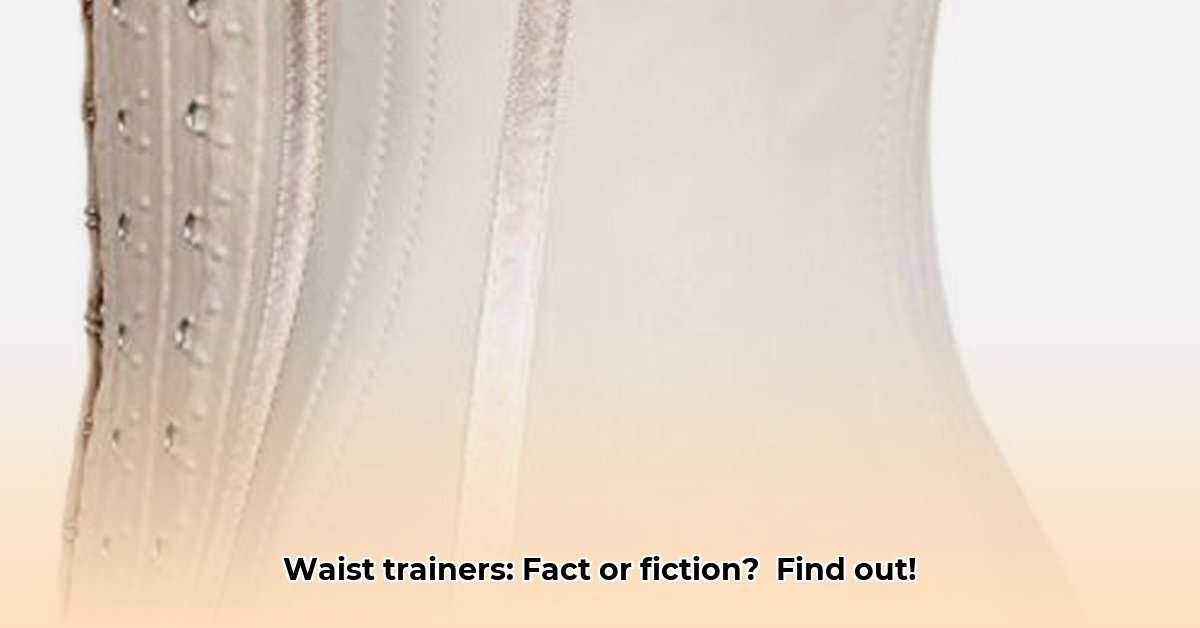
Fajas for Weight Loss: Separating Fact from Fiction
The allure of fajas (shapewear) for weight loss is undeniable. Many advertisements portray them as a miracle solution, promising effortless pound shedding. However, the reality is far more nuanced. This article separates fact from fiction, exploring fajas' legitimate uses and dispelling common misconceptions.
The Allure of the "Miracle Garment"
Fajas compress the body, creating an instantly slimmer silhouette. This visual effect fuels the belief that they aid weight loss. The immediate change is tempting, but the truth is more complex.
The Science (or Lack Thereof): Do Fajas Burn Calories?
No. Scientifically, there's no evidence supporting fajas as a weight-loss tool. Weight loss fundamentally requires burning more calories than consumed. A faja doesn't burn calories; it merely reshapes the appearance. While visually slimming, it doesn't alter underlying body composition. The idea of a faja magically melting away pounds is a misconception.
What Fajas Can Actually Do: Beyond the Weight Loss Claims
While not a weight-loss solution, fajas have legitimate uses:
- Post-Surgery Support: Following procedures like liposuction or tummy tucks, fajas offer support, reducing swelling and enhancing comfort during recovery. Always adhere to your surgeon's instructions.
- Postpartum Recovery: Many postpartum women find fajas provide valuable abdominal support and comfort. However, consult your doctor before use.
- Improved Posture (Possibly): Some experience improved posture due to the compression encouraging better spinal alignment. This is a potential benefit, not a guaranteed outcome.
Do you find yourself wondering if the benefits outweigh the potential drawbacks? Let's explore further.
Potential Downsides: Comfort, Breathing, and More
Wearing a faja isn't always comfortable. Potential drawbacks include:
- Discomfort: Tight compression can cause discomfort, skin irritation, chafing, or restricted breathing, especially with ill-fitting or poorly made fajas.
- Limited Movement: The snug fit restricts movement, making it unsuitable for workouts. Relying on a faja instead of exercise is ineffective for weight loss.
- Overheating: Non-breathable materials can trap heat, leading to overheating, particularly in warm climates or during activity.
Choosing a Faja: Making an Informed Decision
If considering a faja, choose thoughtfully:
- Material Matters: Opt for breathable fabrics like cotton blends to prevent skin irritation and overheating.
- Sizing is Key: Proper sizing is crucial. A faja too small is dangerously restrictive; one too large provides insufficient support.
- Know the Limitations: Remember, a faja isn't a weight-loss solution. Its benefits are limited to specific situations.
The Bottom Line: Sustainable Weight Loss Takes Effort
Fajas don't magically melt fat. They offer limited support in certain contexts but aren't a weight-loss shortcut. Sustainable weight loss stems from a balanced diet, regular exercise, and a holistic approach to well-being.
A staggering 95% of individuals attempting fad diets fail to lose weight long-term. Why? Because sustainable weight loss is a journey, not a quick fix.
Actionable Steps for Safe Faja Use
- Consult Your Doctor: Discuss faja use with your doctor, especially post-surgery or postpartum.
- Choose Wisely: Select a breathable, well-fitting faja. Avoid excessively tight garments.
- Wear It Appropriately: Use as directed, avoiding prolonged wear if discomfort arises.
- Listen to Your Body: Remove the faja immediately if experiencing discomfort, irritation, or breathing difficulty.
- Healthy Habits are Essential: A faja is not a substitute for a healthy lifestyle; prioritize a balanced diet and regular exercise.
Weighing the Pros and Cons: A Balanced Perspective
| Pros | Cons |
|---|---|
| Temporary body shaping | Discomfort and potential skin irritation |
| Post-surgical and postpartum support | Restricted breathing and movement |
| Potential improvement of posture | Overheating |
| Psychological boost of confidence | Risk of unrealistic expectations |
Ultimately, lasting weight management necessitates a comprehensive approach encompassing healthy eating, regular exercise, and a positive mindset. Fajas may provide limited support, but shouldn't be viewed as a primary weight-loss method.
How to Choose the Right Faja Based on Body Type and Post-Surgery Needs
Choosing the right faja for your body type and post-surgical needs is vital. Different fajas offer varying compression levels and styles.
Understanding Faja Types and Compression Levels
Fajas provide support and shaping, not weight loss. Different fajas offer various compression levels (low, medium, high) and styles. Knowing the difference between a waist cincher, a full-body shaper, and post-surgical garments is critical for informed choices.
How to Choose the Right Faja Based on Body Type
Your body type influences faja selection:
- Hourglass: Waist cinchers or mid-thigh shapers accentuate curves.
- Rectangle: Full-body shapers add curves to the waist and hips.
- Triangle (Pear): High-waisted fajas slim the lower body.
- Inverted Triangle: Fajas targeting waist definition and hip broadening balance proportions.
The goal is to enhance natural shape, not drastically alter it.
Fajas for Post-Surgical Recovery: A Crucial Consideration
Post-surgery, choosing the right faja is critical for recovery and comfort. Your surgeon will guide you on appropriate garment type, compression level, and sizing. Prioritize breathable materials to promote healing.
Debunking Faja Myths: Weight Loss and Beyond
Fajas do not cause significant weight loss. While creating a temporary slimming effect, they don't burn calories or melt fat. They primarily offer support and shape the body. Remember, a holistic approach is crucial for sustainable weight loss.
Pros and Cons of Using Fajas
| Pros | Cons |
|---|---|
| Improved posture | Can cause discomfort if worn incorrectly or for prolonged periods |
| Temporary body shaping | Doesn't promote long-term weight loss |
| Support during post-surgical recovery | May restrict breathing if too tight |
| Increased confidence in one's appearance | Potential for skin irritation with certain materials |
| Can help with back pain (in certain cases) | Not a replacement for healthy lifestyle choices (diet and exercise) |